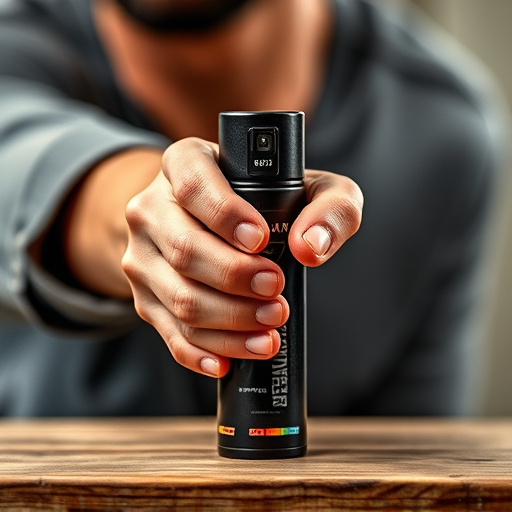Crowd Control Pepper Spray Techniques leverage capsaicin to swiftly incapacitate individuals during protests or disturbances, but their use demands careful consideration and proper training. Effective deployment involves aiming for the eyes and face at close range (2-3 feet), training in diverse scenarios, ensuring adequate ventilation, and adhering to legal restrictions and safety precautions. Mastering these techniques ensures efficient crowd management while minimizing health risks.
In today’s diverse and dynamic world, understanding crowd control pepper spray techniques is essential for civilian protection. This article delves into the intricacies of crowd control pepper spray, exploring its composition, effects, and optimal deployment strategies. We will guide you through effective techniques while navigating legal considerations and safety precautions crucial for responsible civilian use. By the end, readers will be equipped with the knowledge to make informed decisions regarding this powerful tool.
- Understanding Crowd Control Pepper Spray: Its Composition and Effects
- Effective Deployment Techniques for Optimal Protection
- Legal Considerations and Safety Precautions for Civilian Use
Understanding Crowd Control Pepper Spray: Its Composition and Effects
Crowd control pepper spray is a non-lethal agent designed for law enforcement and civilian protection, offering a range of techniques to manage and disperse crowds. Its composition typically includes capsaicin, the active ingredient found in chili peppers, along with other chemicals like sodium chloride and water. When deployed, the spray irritates the eyes, nose, and respiratory system, temporarily incapacitating individuals and allowing for safer control of large gatherings.
The effects of crowd control pepper spray are rapid yet fleeting. It can enable authorities to regain control of chaotic situations, such as protests or public disturbances, by slowing down participants and facilitators. However, its use must be carefully considered and applied to ensure the safety and well-being of both those being protected and the individuals deploying the spray. Proper training and adherence to guidelines are essential for effective and responsible crowd control pepper spray techniques.
Effective Deployment Techniques for Optimal Protection
When deploying crowd control pepper spray for civilian protection, understanding effective techniques is paramount. For optimal results, individuals should aim for the eyes and face—these areas are highly sensitive, enabling rapid incapacitation. Holding the canister at a close range of 2–3 feet (0.6–0.9 meters) and sweeping it side to side ensures maximum coverage. This technique is especially crucial in crowded spaces where quick diffusion of the spray is essential for effective crowd control.
Additionally, training in various deployment scenarios, including simulations involving different terrain and weather conditions, enhances operators’ proficiency. Practicing in low-light or night conditions can improve reaction times during real-world incidents. Remember, proper ventilation is vital after using pepper spray to ensure the quick dispersal of chemical agents from enclosed spaces, minimizing potential health risks for both citizens and law enforcement officers.
Legal Considerations and Safety Precautions for Civilian Use
When considering crowd control pepper spray techniques for civilian protection, it’s crucial to navigate a complex web of legal considerations and safety precautions. Each jurisdiction has specific laws governing the use of such substances by civilians, with restrictions on who can possess, carry, and deploy them. For instance, some regions require permits or registration for non-law enforcement individuals, while others have age limitations or stipulate that pepper spray can only be used in self-defense.
Safety precautions are paramount to ensure minimal harm both to the user and bystanders. Proper training is essential to learn correct application techniques to maximize effectiveness while minimizing risks. This includes understanding wind patterns, safe distances for deployment, and how to handle accidental discharges or use against resistant subjects. Regular maintenance of the equipment and familiarity with local guidelines on disposal are also critical components of safe civilian pepper spray usage.
Crowd control pepper spray, with its proven effectiveness in neutralizing threats while ensuring civilian safety, has emerged as a valuable tool. Understanding its composition, learning optimal deployment techniques, and adhering to legal considerations are paramount for responsible use. By employing the right Crowd Control Pepper Spray Techniques, individuals can protect themselves and maintain public safety during various situations, making it an essential addition to personal defense strategies.
